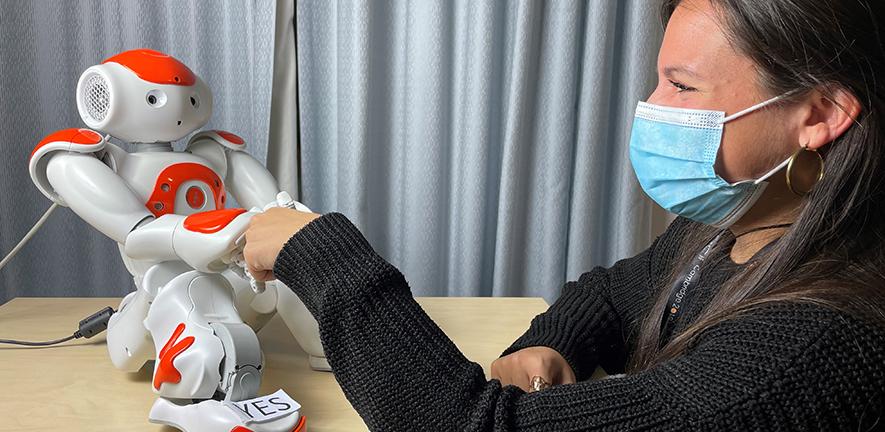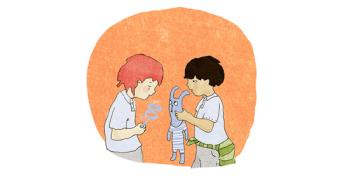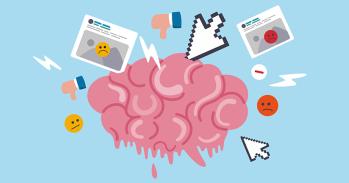
Robots can be better at detecting mental wellbeing issues in children than parent-reported or self-reported testing, a new study suggests.
Robots can be better at detecting mental wellbeing issues in children than parent-reported or self-reported testing, a new study suggests.
Children might see the robot as a confidante – they feel like they won’t get into trouble if they share secrets with it
Nida Itrat Abbasi
A team of roboticists, computer scientists and psychiatrists from the University of Cambridge carried out a study with 28 children between the ages of eight and 13, and had a child-sized humanoid robot administer a series of standard psychological questionnaires to assess the mental wellbeing of each participant.
The children were willing to confide in the robot, in some cases sharing information with the robot that they had not yet shared via the standard assessment method of online or in-person questionnaires. This is the first time that robots have been used to assess mental wellbeing in children.
The researchers say that robots could be a useful addition to traditional methods of mental health assessment, although they are not intended to be a substitute for professional mental health support. The results will be presented today at the 31st IEEE International Conference on Robot & Human Interactive Communication (RO-MAN) in Naples, Italy.
During the COVID-19 pandemic, home schooling, financial pressures, and isolation from peers and friends impacted the mental health of many children. Even before the pandemic however, anxiety and depression among children in the UK has been on the rise, but the resources and support to address mental wellbeing are severely limited.
Professor Hatice Gunes, who leads the Affective Intelligence and Robotics Laboratory in Cambridge’s Department of Computer Science and Technology, has been studying how socially-assistive robots (SARs) can be used as mental wellbeing ‘coaches’ for adults, but in recent years has also been studying how they may be beneficial to children.
“After I became a mother, I was much more interested in how children express themselves as they grow, and how that might overlap with my work in robotics,” said Gunes. “Children are quite tactile, and they’re drawn to technology. If they’re using a screen-based tool, they’re withdrawn from the physical world. But robots are perfect because they’re in the physical world – they’re more interactive, so the children are more engaged.”
With colleagues in Cambridge’s Department of Psychiatry, Gunes and her team designed an experiment to see if robots could be a useful tool to assess mental wellbeing in children.
“There are times when traditional methods aren’t able to catch mental wellbeing lapses in children, as sometimes the changes are incredibly subtle,” said Nida Itrat Abbasi, the study’s first author. “We wanted to see whether robots might be able to help with this process.”
For the study, 28 participants between ages eight and 13 each took part in a one-to-one 45-minute session with a Nao robot – a humanoid robot about 60 centimetres tall. A parent or guardian, along with members of the research team, observed from an adjacent room. Prior to each session, children and their parent or guardian completed standard online questionnaire to assess each child’s mental wellbeing.
During each session, the robot performed four different tasks: 1) asked open-ended questions about happy and sad memories over the last week; 2) administered the Short Mood and Feelings Questionnaire (SMFQ); 3) administered a picture task inspired by the Children’s Apperception Test (CAT), where children are asked to answer questions related to pictures shown; and 4) administered the Revised Children’s Anxiety and Depression Scale (RCADS) for generalised anxiety, panic disorder and low mood.
Children were divided into three different groups following the SMFQ, according to how likely they were to be struggling with their mental wellbeing. Participants interacted with the robot throughout the session by speaking with it, or by touching sensors on the robot’s hands and feet. Additional sensors tracked participants’ heartbeat, head and eye movements during the session.
Study participants all said they enjoyed talking with the robot: some shared information with the robot that they hadn’t shared either in person or on the online questionnaire.
The researchers found that children with varying levels of wellbeing concerns interacted differently with the robot. For children that might not be experiencing mental wellbeing-related problems, the researchers found that interacting with the robot led to more positive response ratings to the questionnaires. However, for children that might be experiencing wellbeing related concerns, the robot may have enabled them to divulge their true feelings and experiences, leading to more negative response ratings to the questionnaire.
“Since the robot we use is child-sized, and completely non-threatening, children might see the robot as a confidante – they feel like they won’t get into trouble if they share secrets with it,” said Abbasi. “Other researchers have found that children are more likely to divulge private information – like that they’re being bullied, for example – to a robot than they would be to an adult.”
The researchers say that while their results show that robots could be a useful tool for psychological assessment of children, they are not a substitute for human interaction.
“We don’t have any intention of replacing psychologists or other mental health professionals with robots, since their expertise far surpasses anything a robot can do,” said co-author Dr Micol Spitale. “However, our work suggests that robots could be a useful tool in helping children to open up and share things they might not be comfortable sharing at first.”
The researchers say that they hope to expand their survey in future, by including more participants and following them over time. They are also investigating whether similar results could be achieved if children interact with the robot via video chat.
The research was supported in part by the Engineering and Physical Sciences Research Council (EPSRC), part of UK Research and Innovation (UKRI), and NIHR Cambridge Biomedical Research Centre. Hatice Gunes is a Fellow of Trinity Hall, Cambridge.
Reference:
Nida Itrat Abbasi et al. ‘Can Robots Help in the Evaluation of Mental Wellbeing in Children? An Empirical Study.’ Paper presented to the 31st IEEE International Conference on Robot & Human Interactive Communication (RO-MAN), Naples, Italy, 29 August – 2 September 2022.

The text in this work is licensed under a Creative Commons Attribution 4.0 International License. Images, including our videos, are Copyright ©University of Cambridge and licensors/contributors as identified. All rights reserved. We make our image and video content available in a number of ways – as here, on our main website under its Terms and conditions, and on a range of channels including social media that permit your use and sharing of our content under their respective Terms.




